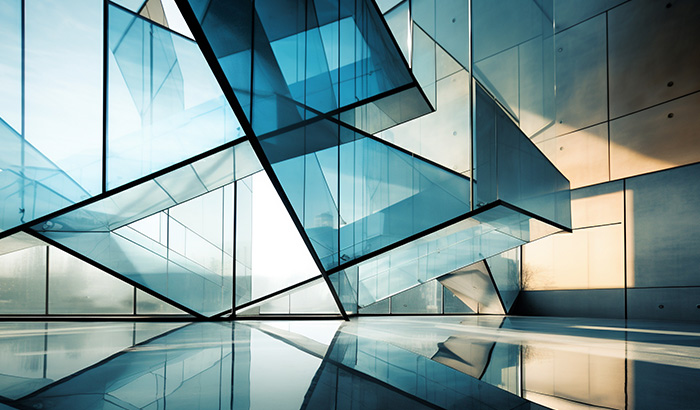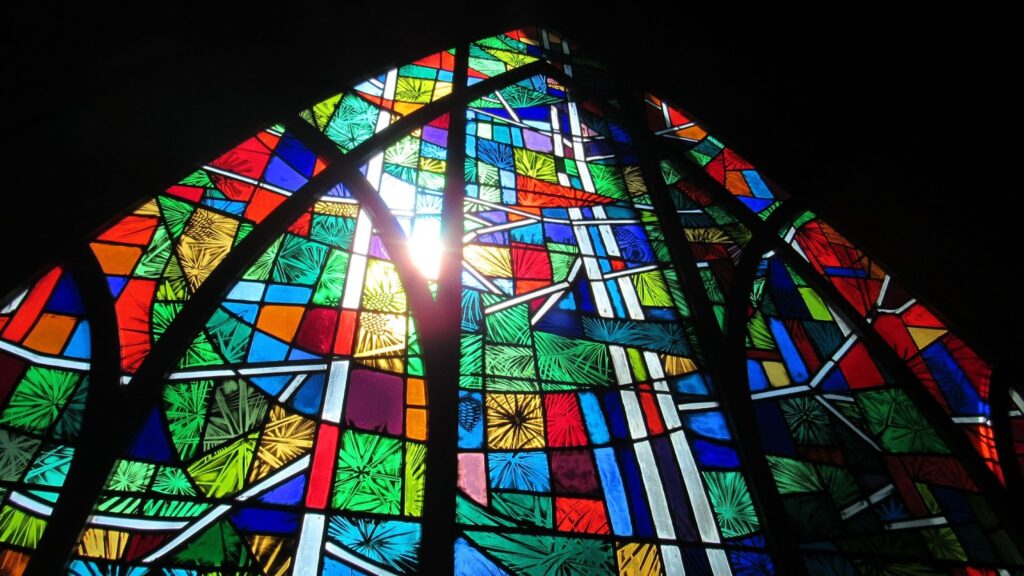
Glass has become a central element in modern architectural design, providing structural support, natural light, and a sense of transparency. This transparency has opened up new possibilities for creating visually stunning and open spaces, allowing energy efficiency and natural light to penetrate the building.
From skyscrapers to residential homes, the use of glass in modern architecture has transformed the way we interact with our built environment. Let’s explore the various applications and benefits of using glass in modern architectural design.
Natural light and energy efficiency in architectural design
Incorporating natural light and energy efficiency in architectural design is crucial for creating sustainable, harmonious, and productive spaces. The use of glass plays a key role in achieving these goals, by reducing the need for artificial lighting, increasing productivity, and creating a connection with the natural environment.
There are many benefits of incorporating natural light through glass. It reduces the reliance on artificial lighting and helps create a sense of openness and spaciousness in buildings. Exposure to natural light has been shown to increase productivity and overall well-being in occupants.
Architectural designs prioritizing energy-efficient glass applications have successfully impacted perceived space and sustainability.
For instance, iconic buildings like the Crystal Cathedral in California and the Louvre Pyramid in Paris are prime examples of the transformative power of glass in modern architecture. These structures showcase the aesthetic beauty of using glass and demonstrate how it can effectively enhance energy efficiency and sustainability.

Types of glass used in architecture
Glass is a versatile material widely used in architecture for its transparency, durability, and aesthetics. Different types of glass serve various purposes and have unique characteristics, making them suitable for different architectural applications.
Understanding the various types of glass used in architecture helps architects and designers make informed decisions when selecting the most appropriate type for their projects.
Types of architectural glass
Several types of architectural glass are used in construction, each with its unique properties and characteristics.
Tempered glass
Tempered glass is a type of safety glass that is four times stronger than regular glass and designed to shatter into small, non-sharp fragments when broken. It is commonly used in applications requiring additional safety and strength, such as glass doors and shower enclosures.
Laminated glass
Laminated glass consists of two or more layers of glass with an interlayer of plastic, providing added resilience and security. It is often used in skylights, canopies, and overhead glazing.
Insulated glass
Insulated glass, also known as double glazing, is made up of two or more panes of glass separated by a spacer and sealed to create a space between them. This design improves insulation and reduces heat transfer, which makes it suitable for windows and doors in energy-efficient buildings.
Low-E glass
Low-emissivity (Low-E) glass has a special coating that reflects heat while allowing light to pass through, so it is ideal for minimizing heat loss in colder climates and reducing solar heat gain in warmer climates.
Smart glass
Smart glass, also known as switchable glass, changes its properties based on external conditions, such as light or temperature. It is often used in privacy partitions, windows, and skylights in commercial buildings.
With its various textures, colors, and patterns, decorative glass provides aesthetic appeal and can be used for both functional and decorative purposes.
Each type of architectural glass has specific functional requirements and uses, making choosing the right type for each application important.
Benefits of using glass in architectural design
The use of glass in modern architectural design offers multiple benefits. Glass enhances natural lighting by allowing sunlight to penetrate and illuminate interior spaces. This reduces the need for artificial lighting and creates a bright, inviting environment.
The transparency of glass fosters a visual connection with the surrounding environment, bringing the outside in and creating a sense of openness.
From a sustainability standpoint, glass is key to reducing energy consumption. Its ability to optimize natural light and heat reduces reliance on artificial lighting and heating systems, which ultimately reduces a building’s carbon footprint.
The flexibility of glass allows for unique and innovative designs, offering architects and designers endless possibilities to create modern, aesthetically pleasing structures.

Incorporating glass features in architectural design
Architectural glass offers a host of features that enhance a design’s visual appeal, functionality, and safety.
- Transparency allows for unobstructed views and can create a sense of openness and spaciousness. Use transparency to connect interior spaces with nature.
- Reflection and refraction can manipulate light and create interesting visual effects. Use glass to bring in natural light and create a dynamic visual experience.
- Acoustic performance is improved with the use of specialized glass that reduces noise transmission and ensures a tranquil atmosphere.
- Safety and security features such as tempered or laminated glass protect without sacrificing aesthetics, providing peace of mind.
In architectural design, you can incorporate these features to create a seamless flow between indoor and outdoor spaces while providing a peaceful and secure environment. By leveraging the features of architectural glass, designers create visually stunning and highly functional spaces while prioritizing the occupants’ safety and well-being.
Considerations for incorporating glass features into buildings
When incorporating glass features into buildings, there are several important considerations to keep in mind to ensure safety, functionality, and aesthetics. From selecting the right type of glass to maximizing natural light and energy efficiency, careful planning and attention to detail are essential for a successful integration of glass elements in building design.
Factors such as maintenance, privacy, and environmental impact should also be considered when incorporating glass features. By addressing these considerations thoughtfully, architects and designers can create beautiful, functional spaces that seamlessly blend the benefits of glass with the overall building design.
Using transparent walls in modern architecture
Transparent walls in modern architecture offer several advantages, including increased natural light, a sense of openness, and a seamless connection between indoor and outdoor spaces. These walls also contribute to the aesthetic appeal of a building and enhance the overall experience for occupants. However, challenges such as safety and privacy need to be carefully considered.
From a safety perspective, transparent walls may pose a risk of accidental collisions, particularly in high-traffic areas. Privacy is also a concern, as occupants may feel exposed in spaces with transparent walls. Maintaining thermal efficiency in buildings with transparent walls may be challenging, as they can contribute to heat gain or loss. Maintaining these walls, including cleaning and upkeep of the material, is another factor to consider.
With careful design and planning, you’ll be able to mitigate these challenges. Advances in materials and technologies improve the safety, privacy, and thermal efficiency of transparent walls. Apply sustainable design principles to minimize the environmental impact of using transparent walls in modern architecture.
Stained glass and artistic elements

Stained glass has become a prominent feature in contemporary architecture, adding both artistic beauty and functional benefits to buildings.
The use of stained glass in modern design allows for the creation of stunning visual effects through the manipulation of light and color. Its ability to transform natural light has made it a popular choice for enhancing the aesthetics of interior and exterior spaces.
With advancements in modern techniques and technology, stained glass has experienced a renaissance in architectural design. Innovative manufacturing processes and digital tools have expanded the possibilities for creating intricate and customized stained glass designs, making it more accessible for architects and designers to incorporate into their projects.
Stained glass’s role in sustainable and eco-friendly design cannot be overlooked. Its ability to filter and diffuse light reduces the reliance on artificial lighting, leading to energy savings and promoting a greener environment. Additionally, the use of recycled materials in stained glass production aligns with sustainable design principles, making it a preferred choice for environmentally conscious projects.
Stained glass not only adds artistic elements to contemporary architecture but also contributes to sustainable and eco-friendly design practices. Its resurgence and modern applications have solidified its significance in shaping the aesthetics and functionality of architectural spaces.
Glass feature from Valley Glass
For those looking to incorporate these elements into their projects, Valley Glass is ready to help. With their expertise in cutting-edge glass solutions and commitment to quality and craftsmanship, Valley Glass is the perfect partner to bring your architectural visions to life.
Contact Valley Glass and let us help you harness the transformative power of glass and elevate your next project to a work of art.



Leave a Reply